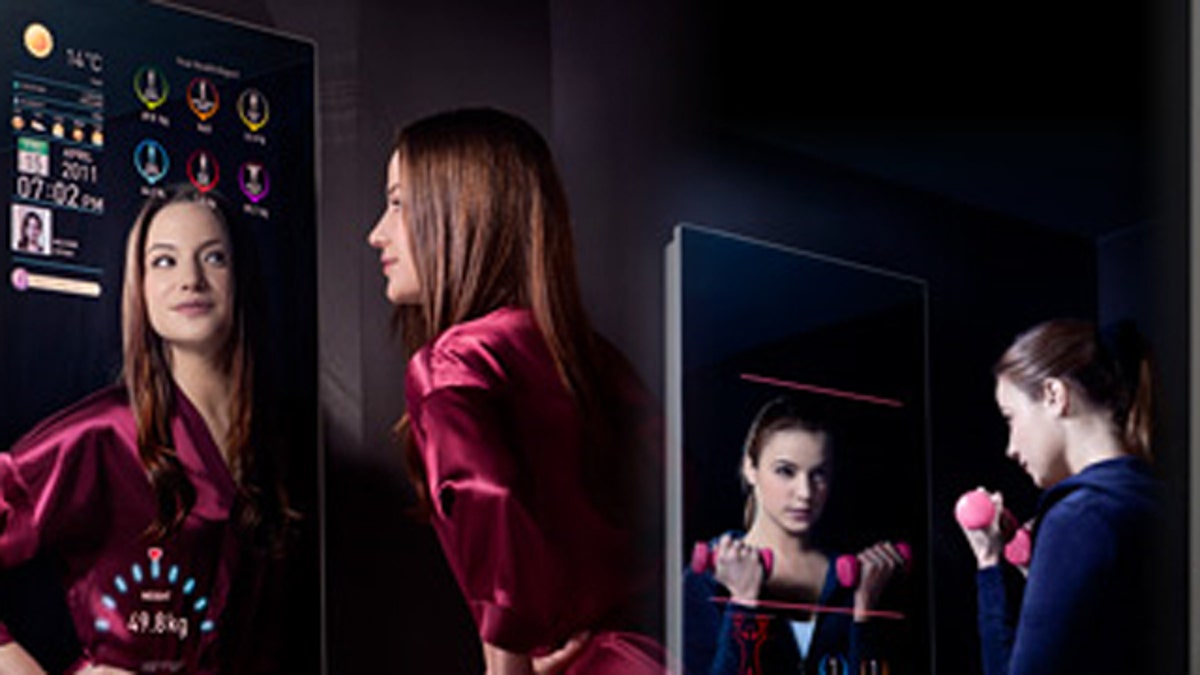
The future was supposed to be here by now.
For years, we’ve been promised smart home technologies, those fantastical futuristic toys that would transform the home into a gleaming digital palace, but they never seem to materialize.
Sure, we’ve come close. But while “The Jetsons” had a robo-maid, we’ve had to make do with mere robo-vacuums. While “Back to the Future II” promised us wall-sized videophones, we Skype, provided the WiFi isn’t acting up.
So why has it taken so long for the home to be truly transformed by tech?
“It’s probably because we didn’t have the infrastructure in place,” says Laura Hubbard, spokeswoman for the Consumer Electronics Association. “But now with wireless technology and more homes being connected to broadband, it’s much easier for the homeowner to connect stuff in the home. There are a lot more do-it-yourself options.”
Though our humble homes fail to meet the wide-eyed promises of Hollywood and Hanna-Barbera, today’s smart home technology is actually pretty cool.
Information Overload
You might be asking, what separates smart home technology from the everyday devices already found in the home? Well, it’s all about connectivity.
“In a smart home, all of the devices and different consumer electronic products you have talk to each other,” Hubbard said.
When it comes to plugging into media, consumers already have a lot to choose from. Internet-connected set-top boxes like Google TV, Apple TV, Boxee and others are all the rage this year, capable of wirelessly linking streaming services like Netflix and Hulu to your TV, or blasting your iTunes library through your stereo. Yes, folks, the future means we’ll never be more than a moment away from an on-demand rerun of “Friends” or an endless loop of Rihanna’s latest single. Isn’t it glorious?
While set-top boxes certainly add great functionality to your media systems, the future is also going to look a whole lot more integrated. Many of the TVs hitting the market right now, like Vizio’s V.I.A. line, have Internet capabilities baked right in, making your TV a seamless hub of streaming content without having to install a separate box-top unit.
And if information overload from your TV alone isn’t enough to satiate your craving for news and media, there’s always the Cybertecture Mirror, a mirror that allows you to read the latest headlines and check Facebook while you shave or get ready in the morning.
One Panel to Rule Them All
At first we had analog thermostats with big broad dials and crude temperature gauges that clicked on seemingly at random, never able to maintain an optimal temperature for more than a few minutes. Then programmable thermostats hit the market, sporting rubberized buttons and digital readouts that conferred the illusion of precision. But tomorrow’s “home of the future” won’t have a thermostat at all. In its place will sit a touchscreen tablet capable of controlling everything in the house.
“Smart house control panels are an extremely exciting trend,” said Candice Cerro, a spokeswoman with Move.com, a site that tracks trends in real estate. “The ability to control lighting, sound, temperature and more from one spot in the house is the ultimate luxury.”
Today’s systems, like Control4, Intel’s Home Dashboard, and Cisco’s Home Energy Controller allow you to take charge of everything operating in the home, all from a single touchscreen display. These cutting-edge systems look cool, but having to buy a standalone device just to manage home functions does feel like a bit of a backwards step, particularly since we are living in an age when most of us carry smart phones with more computing power than it took to land Apollo 11 on the moon.
Once all these functions get shifted to iPhones, iPads and Android devices, rather than requiring a separate device, a digital home dashboard system will really start to look attractive to consumers. These displays also promise to revolutionize the way we think about home security, learning and adapting to our behavior in order to keep thieves on their toes.
“For those worried about safety while on vacation, smart house security systems make it easy for them to check in from their phones or tablets,” Cerro says. “Some smart houses can even record the owners’ typical light usage and mimic it throughout the day while they are away to make it appear as if someone is always home.”
The Future Is Imminent
Of course, many of the best future gadgets haven’t been invented yet; or, in the case of something like the Xbox Kinect, the technology is there, but the use has yet to be devised.
The Kinect is a powerful motion-sensing suite of microphones and cameras that transforms your body into a video game controller. But calling it a mere video game system is like calling the iPhone a mere phone. Sure it does video games, but a legion of hackers is busy at work dreaming up new uses for this powerful piece of technology.
In the future, you’ll be able to ditch your remote and simply swipe your hand through the air to change channels. Or how about integrating a Kinect with a cleaning robot, allowing it to interact with humans and map its surroundings.
The possibilities in the home are already exciting, and we have only yet seen a small portion of possible applications for devices like the Kinect.
So bring on the future and let the machines rule, I say. Let’s just hope the future looks more like “The Jetsons” and less like the “Terminator.”